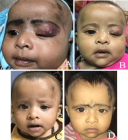About Usmanu Danfodiyo University
Usmanu Danfodiyo University
Articles by Usmanu Danfodiyo University
Common reproductive problem associated with one humped camel (Camelus dromedarius) in West Africa
Published on: 3rd March, 2020
OCLC Number/Unique Identifier: 8875582446
The problems of reproduction in the camel are not extensively investigated as in the bovine, caprine and ovine species. There is need to elucidate the problem in detailed in order to overcome the problem of production and genetic multiplication. The information collected on these problems is derived mainly from questioning the camel owners, slaughterhouse material and very limited clinical and farm observations.
Anatomical changes of the development of red Sokoto goat stomach
Published on: 3rd March, 2020
OCLC Number/Unique Identifier: 8875587753
This study is aimed at investigating the age related changes in postnatal development of red Sokoto goat stomach. In this study, a total of ten red Sokoto goat digestive tract samples were used and they were grouped into five (5) age categories (group A to E). The goat ages were estimated using dentition eruption and wearing. The stomach was identified and separated from the other part of digestive tract. The gross study revealed that the stomach was composed of four (4) segments that named; rumen, reticulum, omasum and abomasum with anatomical demarcations between them. The biometric study of weight, length, width, thickness, and volume was found to be increasing with advancement in postnatal ages with the following valves shows the mean value of weight, length, width, thickness and volume were to be 29 to 58.0 (g), 23.5, to 52.1 (cm), 15.4 to 29.0 (cm), 0.48 to 1.0 (mm) and102 to 432 (cm3) from group A to group E respectively. Based on the above findings it was suggested that more research should be conducted using histological techniques and electron microscopy in order to finalize on the findings.
Risk evaluation and modeling of soils contaminated with Polycyclic Aromatic Hydrocarbons (PAHs) in parts of Bonny Island, Niger Delta, Nigeria
Published on: 27th May, 2020
OCLC Number/Unique Identifier: 8609740211
Environmental impact of a recent oil spill incident in Bonny terminal using soil media was studied using a risk-based modeling approach. The establishment of the presence of contaminants of concern (CoC), evaluation/assessment, modeling spilled volume and ascertaining potential health risk associated with the spill incident was carried out. The Contaminant of Concern (CoC) included Total Petroleum Hydrocarbons (TPH) and Polycyclic Aromatic Hydrocarbons (PAHs). Soils and groundwater were sampled in the vicinity of the spill incident and further away into the surrounding communities. Soils were sampled into the depths (0.1 m, 0.5 m,1.0 m, 1.5 m), and the results of sieve analysis revealed that the area is predominantly silty sand in composition. This study also revealed that TPH concentration at all locations and depths exceeded DPR target value of 50 mg/kg. The TPH model revealed that a total volume of 222,500m3 of the spill area exceeded DPR intervention value of 5000 mg/kg. The results of PAH showed that only BS-1, BS-6, BS-8, BS-9 and BS-10 exceeded DPR target value of 1.0 mg/kg at some depths. All other sample depths and locations were within the target limit. The 3-D grid generated for PAH showed that 563,000m3 of the study area exceeded the DPR target value. The 3-D block models generated for TPH and PAH, along with the cross-sections and extracted time slices all showed that the concentration of the Contaminant of Concern (CoC) generally decreased with depth, and the centre of the spill located at the south-eastern part of the survey area. Based on these models, three spill zones were identified; Zone 1-highly contaminated areas (BS-8, BS-9, BS-10); Zone 2 - moderately contaminated areas (BS-1, BS-2, BS-6, BS-7); and low contaminated areas (BS-3, BS-4, BS-5). The entire soil in the area were contaminated with TPH and 47% of the area contaminated with PAH. This study has shown the effectiveness of the use of a model-based approach in quantifying hydrocarbon contamination volumes in the area. There is therefore the need for continuous monitoring of hydrocarbon spills in the area.
Comparative Osteometric study of some selected bones of local domestic turkey and guinea fowl
Published on: 17th March, 2021
OCLC Number/Unique Identifier: 9038791097
The research was conducted in the Gross section of Veterinary Anatomy laboratory with the aim of preparation and comparing some skeleton bones of local domestic turkey and guinea fowl. Samples were purchased, sacrifice, feather and excess flesh were removed and boiled using water to produce the bones. The duration of process was recorded. Comparative biometry study was conducted on some selected bones (scapular, coracoid, furcular and tibiotarsus) and the bones were mounted using wooden stand, copper wire, and adhesive gum with the aim of enhancing avian teaching. Based on the processes of the research. It was recommended to use plastic materials in production of skeletal models to avoid deterioration of bones for proper teaching in veterinary anatomy.
Comparative anatomy of selected bones of forelimb of local Mongrelian Dog (Canis lupus familiaris) in Sokoto, Nigeria
Published on: 14th December, 2021
OCLC Number/Unique Identifier: 9378344586
This research was conducted over period of 3 months with the aim of studying Age related changes of selected bones of forelimb (Scapula, Humerus, Radius and Ulna) in Local Mongrelian Dog (Canis lupus familiaris). The study entails biometrical and gross observations on the bones. The sample bones were acquired from the experimental animals of comparative anatomy in the department. The bones were categorized into various age groups for the research. The length, width, diameter and circumference of the samples (scapula, humerus, radius and ulna bones) were determined for all the groups. The shape, size, color, location, position and relation of each segment of the samples at various stages of development were determined. The differences across the age groups of different samples were observed and recorded. Based on the research result, it was concluded that, the biometric and morphometry data was found to be increasing with advancement of age. A baseline data was established with the view to enhance learning.

HSPI: We're glad you're here. Please click "create a new Query" if you are a new visitor to our website and need further information from us.
If you are already a member of our network and need to keep track of any developments regarding a question you have already submitted, click "take me to my Query."

















































































































































